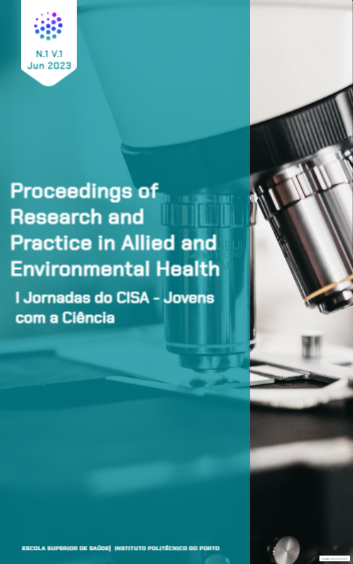Resumo
Background: Colorectal cancer (CRC) is the most incident neoplasia in Portugal [1]. When diagnosed early, the 5-year cancer survival rate increases to 90% [2]. However, the current noninvasive screening method for CRC, Fecal Immunochemical Test (FIT), has low sensitivity and specificity for detecting precancerous lesions [3, 4]. Therefore, it is necessary to develop a new screening method for CRC. MicroRNAs (miRs) play a role in genetic events associated with carcinogenesis, and their disrupted expression in tumors can be readily detected in biological fluids [5-8]. This characteristic offers a promising tool for CRC screening. Objective: Review the existing literature to assess the advancements made in recent years in the potential use of miRs as a biomarker to improve the CRC screening. Methods: A comprehensive literature review was conducted, analyzing a total of 54 studies that investigated miRs expression in stool and blood samples and evaluated is potential as biomarkers for CRC identification. Results: In our search, we identified a total of 104 miRs with potential relevance to CRC screening in both stool and blood samples. Among these miRs, miR-21-5p and miR-92a-3p, along their cluster including miR-29a-3p, miR-20a-5p, and miR-18-5p, emerged as the most frequently mentioned and promising candidates. Furthermore, is reported a differential expression of miR-135b-5p, miR-223-3p, and miR-451 only in stool specimens, while miR-139-3p and miR-4516 exhibit this altered expression in blood samples. Other notable miRs, including miR-146a-5p, miR-199a-5p, miR-421, miR-27a-3p, and miR-221-3p, have shown promising results in detecting advanced adenomas, exhibiting a better performance compared to FIT. However, these findings require further validation in a larger patient cohort and across different biological samples to confirm their significance for CRC and precancerous lesions detection. Conclusions: Therefore, miRs are regarded as a promising approach for enhancing the detection of CRC, particularly in the identification of precancerous lesions. Nevertheless, further studies are required to assess the accuracy of these molecules as biomarkers.
Referências
Sung H, Ferlay J, Siegel RL, et al. Global Cancer Statistics 2020: GLOBOCAN estimates of incidence and mortality worldwide for 36 Cancers in 185 countries. CA: A Cancer Journal for Clinicians. 2021;71(3):209-49.
Simon K. Colorectal cancer development and advances in screening. Clinical Interventions in Aging. 2016;11:967-76.
Areia M, Fuccio L, Hassan C, et al. Cost-utility analysis of colonoscopy or faecal immunochemical test for population-based organised colorectal cancer screening. United European Gastroenterology Journal. 2019;7(1):105-13.
Robertson DJ, Lee JK, Boland CR, et al. Recommendations on Fecal Immunochemical Testing to Screen for Colorectal Neoplasia: A Consensus Statement by the US Multi-Society Task Force on Colorectal Cancer. Gastroenterology. 2017;152(5):1217-37.
Yang L, Belaguli N, Berger DH. MicroRNA and colorectal cancer. World Journal of Surgery. 2009;33(4):638-46.
Stiegelbauer V, Perakis S, Deutsch A, Ling H, Gerger A, Pichler M. MicroRNAs as novel predictive biomarkers and therapeutic targets in colorectal cancer. World Journal of Surgery. 2014;20(33):11727-35.
Duran-Sanchon S, Moreno L, Auge JM, et al. Identification and validation of microRNA profiles in fecal samples for detection of colorectal cancer. Gastroenterology. 2020;158(4):947-57.
Kosaka N, Iguchi H, Ochiya T. Circulating microRNA in body fluid: a new potential biomarker for cancer diagnosis and prognosis. Cancer Science. 2010;101(10):2087-92.

Este trabalho encontra-se publicado com a Licença Internacional Creative Commons Atribuição-NãoComercial-SemDerivações 4.0.
Direitos de Autor (c) 2023 Daniela Santos, Cristiana Gaiteiro, Marlene Santos, Lúcio Santos, Mário Dinis-Ribeiro, Luís Lima

